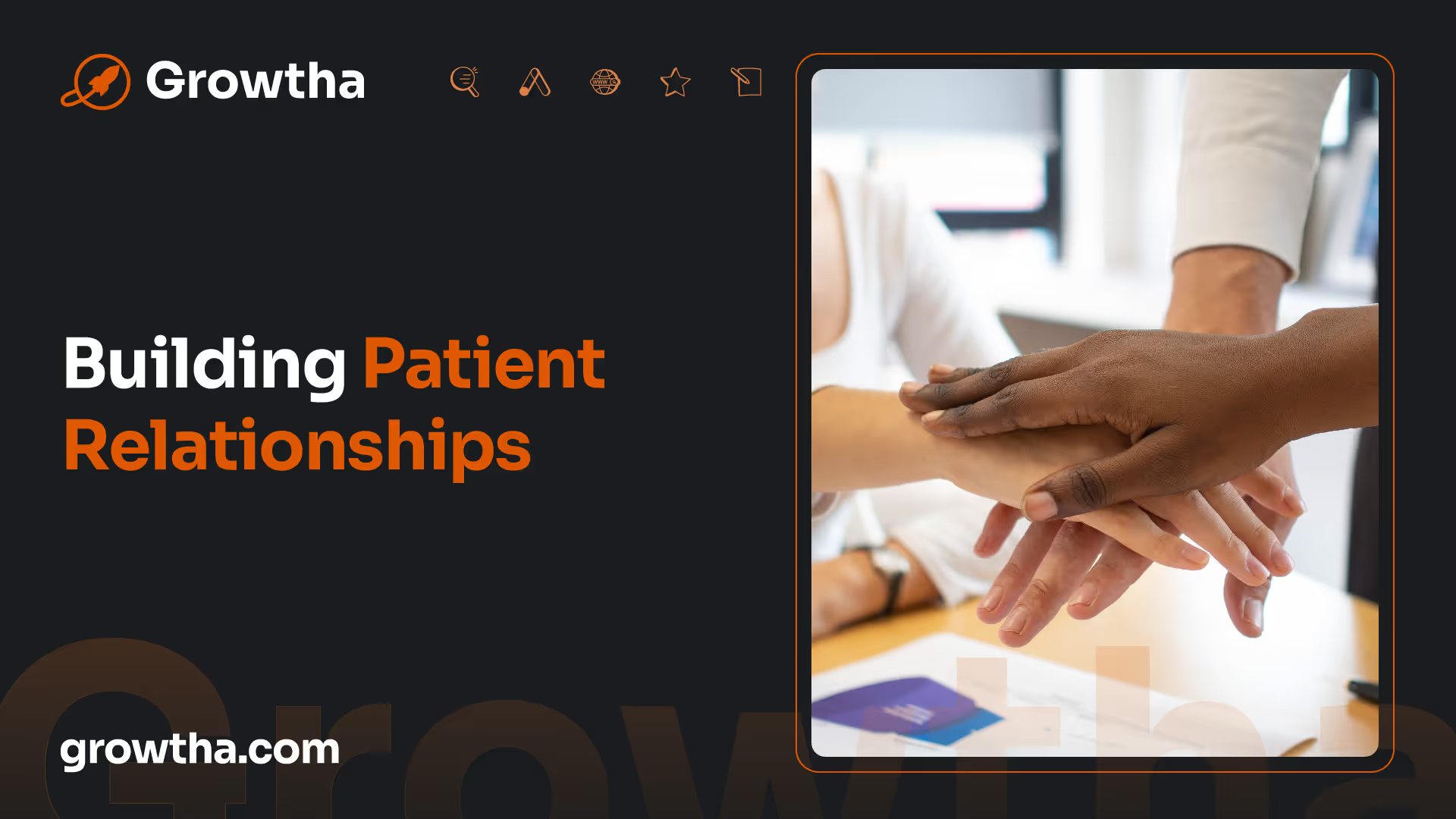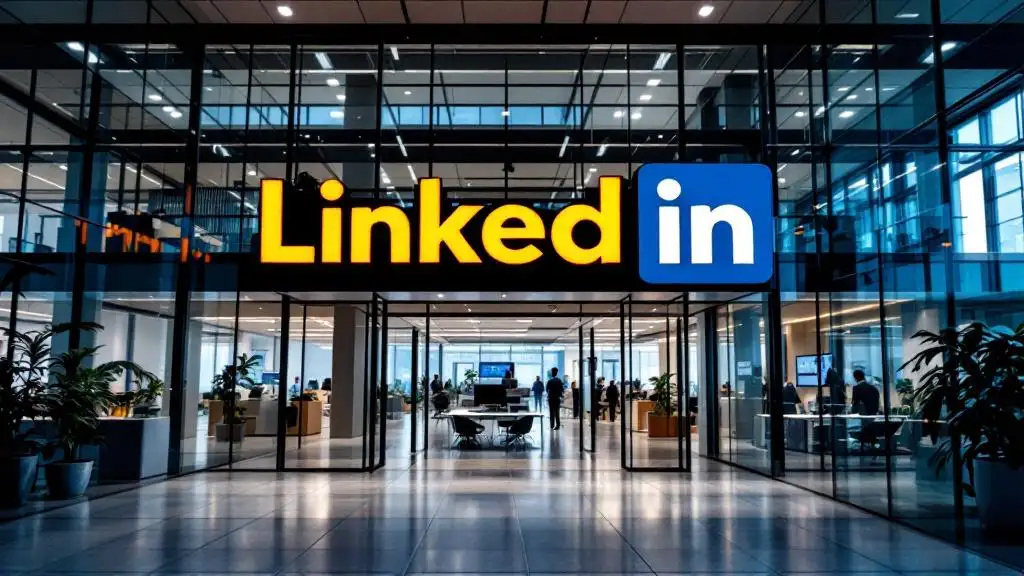Healthcare Marketing & Physician Strategies Summit
In the ever-evolving landscape of healthcare, effective marketing strategies play a crucial role in attracting and engaging patients.


Healthcare Marketing & Physician Strategies Summit
Healthcare Marketing Strategies
In the ever-evolving landscape of healthcare, effective marketing strategies play a crucial role in attracting and engaging patients. Healthcare marketing is a process of strategic outreach and communication that aims to make healthcare consumers aware of services, guide them through their healthcare journey, and keep them engaged with a particular system. It is through these strategies that healthcare providers can stand out in a highly saturated industry.
Importance of Healthcare Marketing
Healthcare marketing is essential for healthcare providers to differentiate themselves and reach their target audience. It allows them to showcase their expertise, services, and unique offerings. By implementing effective marketing ideas, healthcare providers can capture the attention of potential patients and build brand awareness. Effective marketing strategies also help in establishing trust and credibility among patients, which is crucial in the healthcare industry where trust plays a significant role in decision-making.
Role of Thought Leadership
Thought leadership is a key aspect of healthcare marketing that sets providers apart from their competitors. It involves positioning oneself as a medical authority and demonstrating a commitment to innovation and inclusivity. Thought leaders in healthcare gain recognition for their expertise, knowledge, and forward-thinking approach, making them a trusted source of information for patients and industry professionals. By establishing thought leadership, healthcare providers can foster trust and credibility, attracting patients who value expertise and progressive healthcare practices.
Thought leadership can be demonstrated through various channels, such as publishing authoritative articles, participating in industry events, speaking engagements, and engaging in social media conversations. By consistently sharing valuable insights and staying at the forefront of healthcare advancements, thought leaders create a lasting impact on patients and the industry as a whole.
By recognizing the importance of healthcare marketing and embracing thought leadership, healthcare providers can effectively communicate their unique value propositions to patients, build trust, and establish themselves as leaders in the industry. These strategies are vital for attracting patients, fostering relationships, and ultimately delivering high-quality care.

Building Patient Relationships
In the realm of healthcare marketing, building strong patient relationships is of utmost importance. By establishing trust and fostering engagement, healthcare marketers can create meaningful connections with patients, ultimately leading to better healthcare outcomes.
Creating Trust through Marketing
Trust is a foundational element in the patient-provider relationship, and healthcare marketing plays a crucial role in building and maintaining that trust. When patients feel confident and comfortable with a healthcare provider, they are more likely to seek medical care and follow through with their treatment plans.
To create trust through marketing, healthcare providers can showcase their expertise and thought leadership. By positioning themselves as medical authorities and demonstrating a commitment to innovation and inclusivity, providers can set themselves apart from the competition and instill confidence in patients [1].
Transparency is another key aspect of building trust. Clear and honest communication about services, treatment options, and costs helps patients feel informed and empowered to make healthcare decisions. Sharing patient testimonials and success stories can also go a long way in building trust and showcasing the positive impact of the provider's services.
Interactive Campaigns for Engagement
In addition to trust-building efforts, engaging patients through interactive marketing campaigns is an effective strategy in healthcare marketing. These campaigns foster a sense of community and encourage active participation, creating a deeper connection between patients and healthcare providers [1].
Interactive campaigns can take various forms, such as online quizzes, surveys, contests, or social media challenges. These initiatives not only educate patients but also allow them to actively engage with the healthcare organization. For example, a quiz on healthy living habits or a social media challenge promoting self-care can spark interest and encourage patients to share their experiences.
By engaging patients in a two-way conversation, healthcare marketers can gather valuable insights, improve patient satisfaction, and strengthen their brand reputation. Interactive campaigns also provide an opportunity for healthcare providers to address common misconceptions, educate patients about their services, and promote healthy behaviors.
Overall, building patient relationships in healthcare marketing involves creating trust through thought leadership and transparent communication, while also leveraging interactive campaigns to engage patients and foster a sense of community. By focusing on these strategies, healthcare marketers can enhance patient satisfaction, improve healthcare outcomes, and stand out in a competitive industry.

Key Elements of Healthcare Marketing
In healthcare marketing, understanding and implementing key elements is essential for successful outreach and engagement. Two crucial components to consider are the 5Ps approach and leveraging videos for outreach.
The 5Ps Approach
The 5Ps of healthcare marketing -- Physicians, Patients, Professional Healthcare Administrators, Policy Makers, and Payers -- reflect the key marketing elements used to attract more patients to healthcare systems, doctors, or services. Let's take a closer look at each P:
- Physicians: Physicians play a vital role in healthcare marketing. Highlighting the expertise and qualifications of physicians can help build trust and credibility among patients.
- Patients: Understanding the needs and preferences of patients is crucial. Tailoring marketing efforts to address patient concerns and communicate the value of healthcare services can attract and retain patients.
- Professional Healthcare Administrators: Collaborating with healthcare administrators is important for effective marketing strategies. They can provide insights into the operational aspects of healthcare organizations and help align marketing efforts with overall goals.
- Policy Makers: Engaging with policy makers allows healthcare marketers to stay informed about regulatory changes and advocate for policies that benefit patients and healthcare providers.
- Payers: Payers, such as insurance companies, influence healthcare decisions. Understanding payer requirements and effectively communicating the value of services can help attract patients.
By considering and addressing the 5Ps, healthcare marketers can create comprehensive and targeted campaigns that resonate with their target audience.
Leveraging Videos for Outreach
Videos have emerged as one of the most powerful mediums in healthcare marketing. With more people researching online before considering a healthcare provider, video content offers an engaging and informative way to convey messages. Videos can be utilized in various ways:
- Brand Awareness: Developing engaging video marketing campaigns can be effective for building brand awareness. By showcasing the unique qualities and values of a healthcare organization, videos can leave a lasting impression on viewers.
- Patient Education: Videos are an excellent tool for patient education. They can be used to explain complex medical procedures, provide instructions for post-treatment care, and answer frequently asked questions.
- Testimonials and Stories: Sharing patient testimonials and success stories through videos humanizes the healthcare experience. This can instill trust in potential patients and demonstrate the positive impact of healthcare services.
- Social Media Engagement: Platforms like TikTok and YouTube can be leveraged to engage with younger audiences. By collecting patient insights, refining brand messaging, and sourcing content ideas from trending topics, healthcare marketers can expand their reach and connect with a broader demographic [2].
By utilizing videos as part of the marketing strategy, healthcare organizations can effectively connect with their target audience and make a lasting impact.
Understanding the 5Ps approach and leveraging videos for outreach are key elements of healthcare marketing that can help healthcare organizations effectively communicate their message, build trust with patients, and achieve their marketing goals.
Healthcare Marketing Summit Overview
The Healthcare Marketing & Physician Strategies Summit (HMPS24) is a highly anticipated event that brings together professionals in the healthcare industry to discuss and address various marketing, communication, digital, and physician relationship challenges. The summit serves as a platform for senior-level executives from healthcare organizations nationwide to share actionable strategies and solutions.
HMPS24 Details
The HMPS24 is scheduled to take place on April 17-19, 2024, at Caesars Palace in Las Vegas. This highly esteemed event attracts professionals from various healthcare organizations who are responsible for guiding marketing, communications, digital efforts, physician relations, business development, and customer experience and engagement strategies [3].
Attendees of the HMPS24 can expect a comprehensive program that includes over 60 expert-led concurrent sessions, inspirational keynotes, hands-on workshops, and networking opportunities with marketing and strategy leaders from prominent healthcare organizations. These sessions offer valuable insights from case studies presented by leading healthcare organizations, showcasing innovative solutions and strategies to tackle healthcare challenges effectively.
For individuals who are unable to attend the summit, there is an option to order the Summit Playback. This allows access to session audio synced with slides, ensuring that individuals can benefit from the strategies, solutions, and knowledge shared during the event, even if they are unable to be present in person [3].
Benefits of Summit Participation
Participating in the HMPS24 offers numerous benefits for professionals in the healthcare marketing industry. By attending the summit, individuals have the opportunity to interact with leaders and decision-makers from healthcare organizations nationwide. This direct interaction facilitates networking and the exchange of ideas, enabling attendees to gain valuable insights and build relationships with industry experts.
Moreover, the HMPS24 provides a platform for professionals to learn from case studies presented by leading healthcare organizations. These case studies offer real-world examples of successful strategies and innovative solutions, allowing attendees to apply these learnings to their own healthcare marketing initiatives. The knowledge gained from these sessions can help professionals overcome challenges and drive positive results in their respective organizations [3].
Attending the HMPS24 is a valuable investment in professional growth. With access to expert-led sessions, inspirational keynotes, and hands-on workshops, attendees can expand their knowledge and acquire new skills in healthcare marketing. Additionally, networking opportunities with marketing and strategy leaders provide a chance to share experiences, gain insights, and foster collaborations that can lead to future career advancements [3].
In summary, the HMPS24 offers a unique opportunity for professionals in healthcare marketing to gather, learn, and network. With its diverse program and valuable insights, the summit serves as a platform for sharing strategies, solutions, and knowledge, making it a must-attend event for individuals seeking to stay at the forefront of the ever-evolving healthcare marketing landscape.
Trends in Healthcare Marketing
To stay competitive and adapt to the changing landscape of healthcare, marketing strategies need to evolve. In the coming years, several trends are expected to shape the field of healthcare marketing, including cross-functional collaboration and the growing power of user-generated content.
Cross-Functional Collaboration
Cross-functional collaboration is anticipated to be a significant trend in healthcare marketing. This approach involves breaking down silos and fostering collaboration between different departments within healthcare organizations. By bringing together individuals from marketing, communications, business development, digital, and physician relations, organizations can leverage diverse expertise and perspectives to develop comprehensive and effective marketing strategies [4].
Collaboration between departments allows for a more holistic approach to healthcare marketing. For example, marketing teams can collaborate with physicians to create thought leadership content that highlights the expertise of the organization's medical professionals. This collaboration helps build trust and credibility among patients, as they see physicians as key opinion leaders in their respective fields.
By fostering cross-functional collaboration, healthcare organizations can align their marketing efforts with the overall strategic goals of the organization, resulting in more cohesive and impactful marketing campaigns.
Power of User-Generated Content
User-generated content (UGC) has gained significant influence in healthcare marketing strategies. UGC refers to content created and shared by patients or consumers of healthcare services. This content can take various forms, such as reviews, testimonials, social media posts, and videos. The power of UGC lies in its ability to provide authentic and relatable experiences, which can positively influence potential patients' decision-making process.
In the digital age, patients are increasingly relying on online reviews and testimonials to make informed choices about their healthcare providers. Positive reviews and testimonials can build trust and credibility for healthcare practices, while negative reviews can have a detrimental impact on an organization's reputation. Healthcare marketing teams need to actively manage their digital reputation by monitoring online reviews, maintaining a strong social media presence, and utilizing reputation management platforms to enhance their online presence [2].
Furthermore, leveraging UGC in video marketing campaigns can be a powerful tool for building brand awareness and engaging with younger audiences. Platforms like TikTok provide opportunities to collect patient insights, refine brand messaging, and source content ideas and trending topics. By incorporating UGC into their marketing strategies, healthcare organizations can tap into the authentic voices of their patients, fostering a sense of community and connection.
As healthcare marketing continues to evolve, embracing trends like cross-functional collaboration and the power of user-generated content can help organizations stay ahead of the curve and effectively engage with their target audiences.
Please note that the Healthcare Marketing & Physician Strategies Summit (HMPS24) is not specifically mentioned in this section as it focuses on general trends in healthcare marketing. However, the summit is a valuable event for professionals in the field to gain insights and network with industry leaders [5].
Digital Strategies for Healthcare Marketing
In the digital age, healthcare marketing has evolved to include various strategies that leverage the power of online platforms. Two key digital strategies for healthcare marketing are local SEO for patient acquisition and enhancing user experience online.
Local SEO for Patient Acquisition
Local SEO (Search Engine Optimization) is a powerful strategy for attracting new patients in a specific geographical area. With patients becoming increasingly tech-savvy, they often turn to search engines to research health-related issues and find healthcare providers. Optimizing a healthcare practice's local SEO presence can increase visibility and attract local patients.
To improve local SEO, healthcare providers can focus on several key areas:
- Google Business Profile Optimization: Creating and optimizing a Google Business profile is essential for local search visibility. It ensures that accurate and up-to-date information is displayed when patients search for healthcare services in a specific area.
- Local Citations: Listing a healthcare practice in local directories and citation websites can boost its online presence. These citations provide important information about the practice, such as contact details and location, which search engines consider when ranking local search results.
- Geo-Targeted Pages: Creating dedicated web pages targeting specific locations can help healthcare practices rank higher in local search results. These pages can include location-specific keywords, content, and testimonials to attract patients from the targeted area.
By implementing local SEO strategies, healthcare providers can increase their online visibility and attract patients who are actively seeking healthcare services in their local area.
Enhancing User Experience Online
Providing a patient-first digital experience is crucial for healthcare providers looking to improve user experiences and establish trust. A well-designed healthcare website and digital platform can significantly impact patient satisfaction and engagement.
To enhance user experience online, healthcare providers should consider the following strategies:
- Optimizing Site Speed: Slow-loading websites can frustrate users and lead to high bounce rates. Optimizing site speed ensures that patients can access information quickly and efficiently.
- Improving User Experience (UX): A user-friendly website design and intuitive navigation are essential for a positive user experience. Healthcare providers should focus on clear and organized content, easy-to-use menus, and intuitive interface design.
- Mobile Performance: With the rise of mobile usage, healthcare providers must ensure their websites are mobile-responsive and offer a seamless experience across different devices. Mobile optimization is crucial for patients accessing healthcare information on the go.
- High-Value Content: Creating and leveraging high-value content, such as informative articles, blog posts, and patient testimonials, can engage users and establish the healthcare provider as an authority in their field.
- Eliminating Conversion Barriers: Implementing features like AI chatbots, live chat apps, and patient scheduling software can eliminate conversion barriers and improve patient experience. These tools provide instant assistance and streamline appointment scheduling processes.
By focusing on enhancing user experience online, healthcare providers can build trust with patients, improve engagement, and ultimately drive patient satisfaction and loyalty.
By implementing local SEO strategies and enhancing user experience online, healthcare providers can effectively market their services in the digital landscape, attract new patients, and build strong relationships with their target audience.
References
[1]: https://invideo.io/blog/healthcare-marketing/
[2]: https://www.cardinaldigitalmarketing.com/healthcare-resources/blog/healthcare-digital-marketing-strategies-tips-ideas/
[3]: https://www.healthcarestrategy.com/summit/why-attend/







